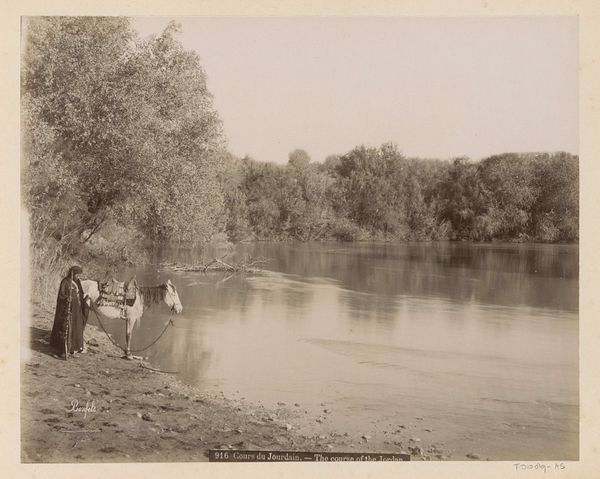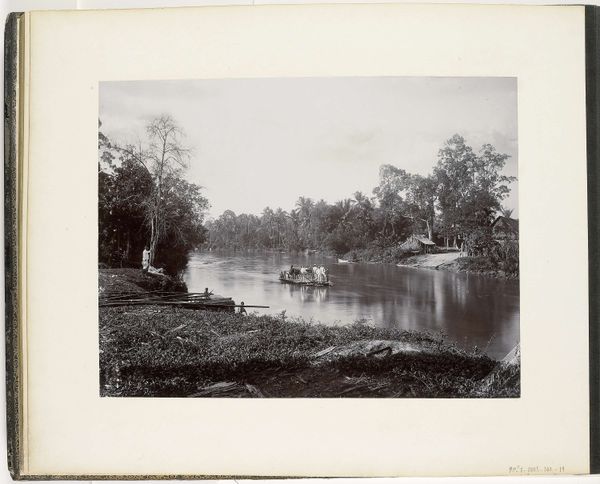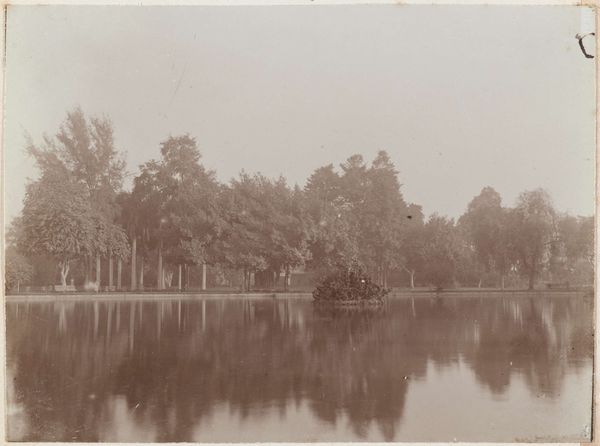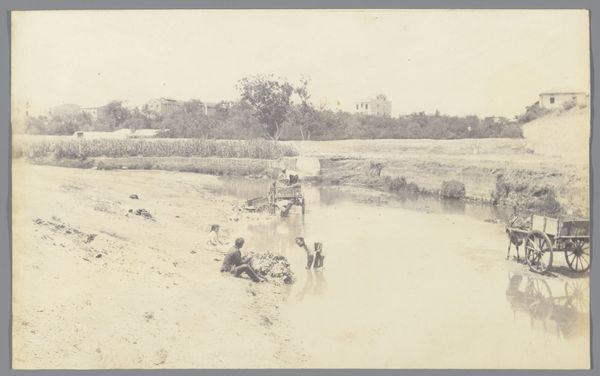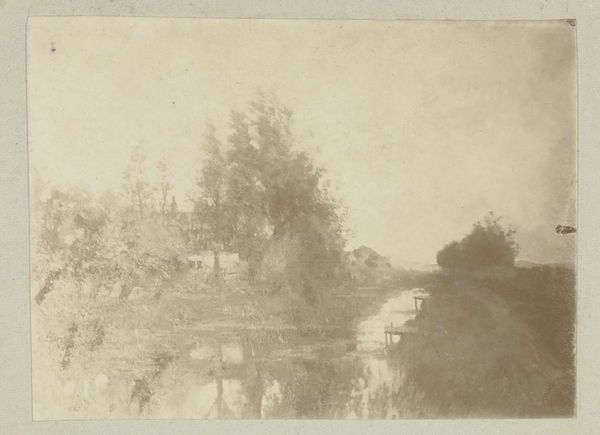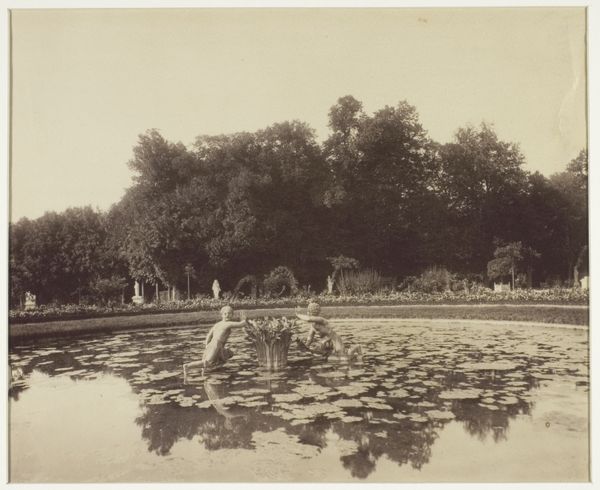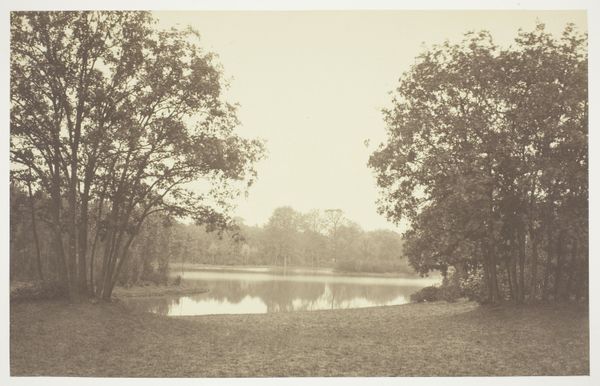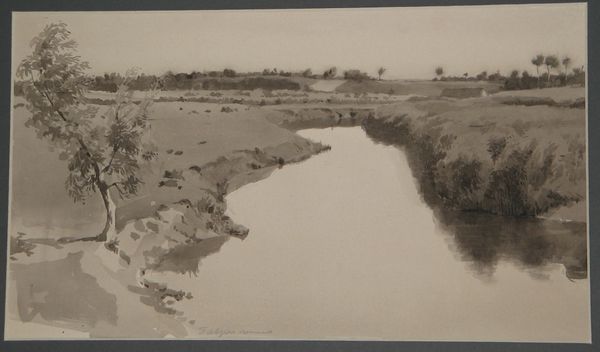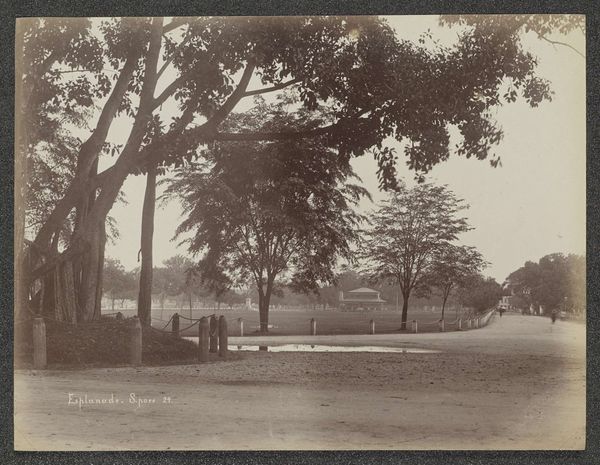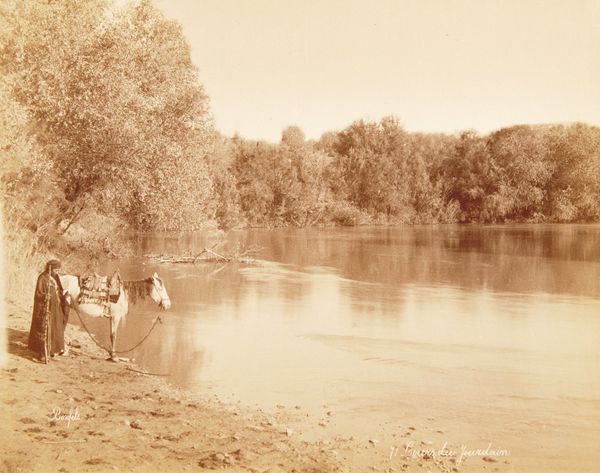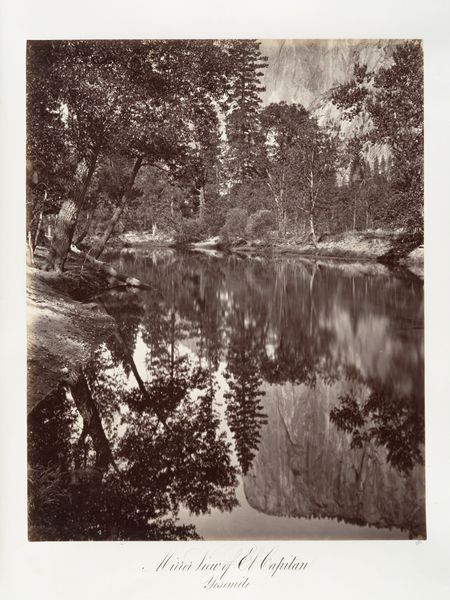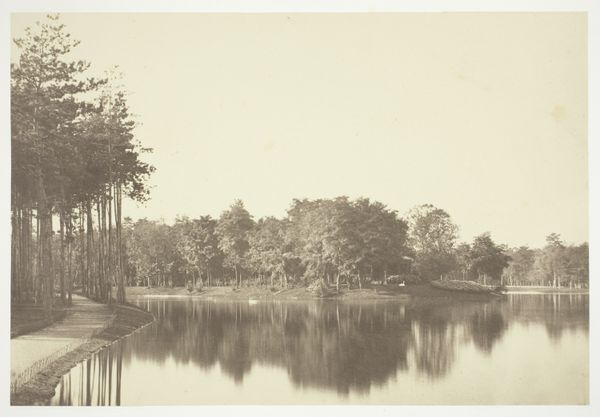
photography
#
landscape
#
photography
#
orientalism
Dimensions: height 215 mm, width 275 mm, height 469 mm, width 558 mm
Copyright: Rijks Museum: Open Domain
Curator: Oh, this photograph just whispers a certain timelessness, doesn’t it? “Herders dragen schapen over de Jordaan,” taken sometime between 1867 and 1877 by Félix Bonfils. The way the sepia tones wash across the scene... it feels almost dreamlike. Editor: It does have that ethereal quality. The soft focus and the subdued palette make it look more like a faded memory than a document of a specific time and place. There's a strong sense of constructed narrative though. Curator: You think so? I'm captivated by its quiet intimacy, and the everyday struggles represented. See how the herders stoically carry their sheep across the river. You can feel the weight, almost hear the water lapping. Editor: I agree about the intimacy, and there’s certainly an interesting contrast between that quiet intimacy and its function. Bonfils sold these images widely as orientalist fantasies for a European audience hungry for exotic visions of the "Holy Land.” Curator: And those dreamy textures. What medium did Bonfils use to produce that effect? Editor: It’s an albumen print, a very popular photographic process at the time that uses egg whites to bind the photographic chemicals to the paper. That albumen gives it that slightly glossy, almost velvety surface. Curator: It definitely contributes to the dreaminess. I find it hard to resist images like this one; it calls to something very ancient and very essential inside of me. Makes me question if, under different circumstances, I too would find myself doing what these workers are doing. Editor: And maybe that is part of the photograph’s power; this capacity to conjure both personal feelings and historical reflections, and that is the heart of art's public role—encouraging contemplation of these kinds of intimate human struggles within larger contexts of history, politics, and cultural imagination. Curator: Precisely. It's a beautiful invitation to both look and feel. Editor: Indeed. There’s always more to discover, even in something that at first seems simple or straightforward.
Comments
No comments
Be the first to comment and join the conversation on the ultimate creative platform.
